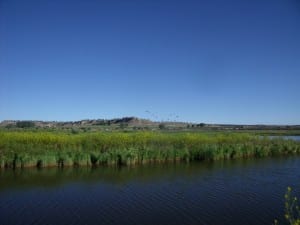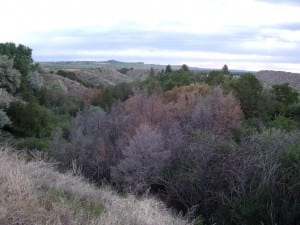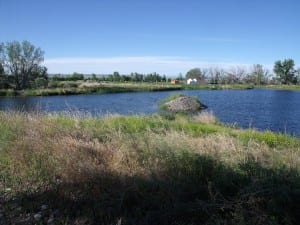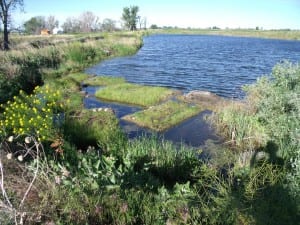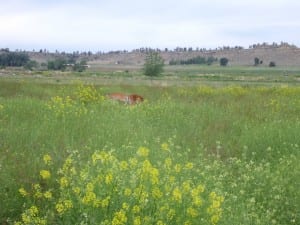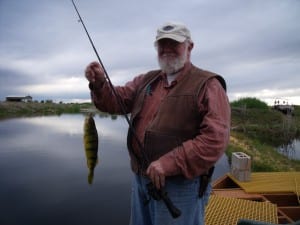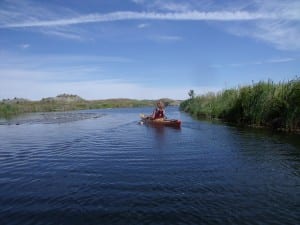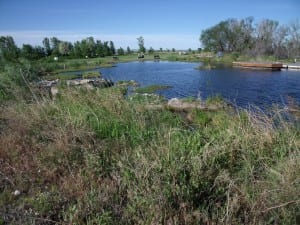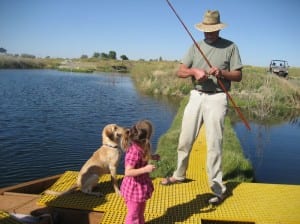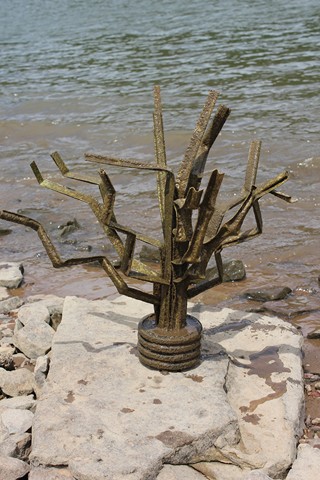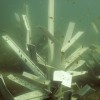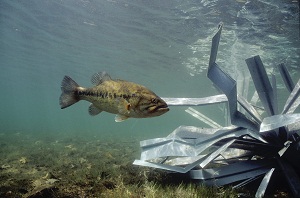Category: Fish Habitat News
If you have questions about natural fish habitat, fish structure, fish attractors, artificial fish habitat or Growing big fish, this is the Structurespot.
Here you will find information about fishiding artificial fish habitat, as well as all the others. From stories about sinking train cars and planes, to planting natural plants, we can talk about it here. Show us your own contraptions and how they are working out. Send us your pics of your structure and get advice on all aspects of this growing industry.
Audit finds fish habitat not well protected
Audit finds fish habitat not well protected, fire suppression system inadequate
Published on July 5, 2012 by DesiWireFeed · No Comments
THE CANADIAN PRESS
VICTORIA — An audit by British Columbia’s forestry watchdog has found 23 of 24 timber sales licence holders it investigated failed to comply with provincial legislation.
Auditors from the Forest Practices Board discovered instances where fish habitat was not being adequately protected because of sediment introduced into streams.
See the dozens of unique artificial fish habitat models, fish attractors and fish cover used at fishiding.com, the leader in proven science based, fish protection.
The board says some BC Timber Sales licence holders failed to maintain the natural drainage patterns of several small streams while others did not have an adequate fire suppression system on site during extreme fire hazard conditions.
The areas audited include Gold River on the west coast of Vancouver Island, Sayward on the west, and Lower Mainland areas across from Campbell River.
Board Chairman Al Gorley says more than 100 compliance audits have been conducted since 1996, including more than 20 of BC Timber Sales operations, and typically very few problems are found.
He says this audit is an exception, although BC Timber Sales has committed to taking action to address the board’s concerns.
Eat more fish to clean your lake?
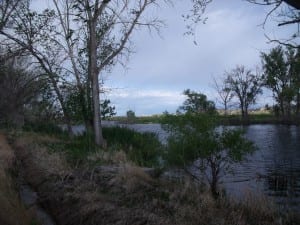 A few weeks ago, my wife Renee’ and I took a trip to Shepherd Montana, headquarters of Floating Island International Inc. We had been invited to stay on the ranch and to see for ourselves how Bruce Kania and his wife Anne, are growing huge fish fast with a woven matrix of inert substrates called BioHaven, or Floating Treatment Wetlands. I had been in contact with Bruce for some time, learning about how excessive nutrients brought in from runoff can be turned into fresh, tasty fish. Not only do the Kania’s grow fish, but frogs, minnows, pheasant, deer and all species of waterfowl prosper in their efforts. Even Yellowstone cutthroat trout flourish in this superior environment, along with crappie and perch and various minnows.
A few weeks ago, my wife Renee’ and I took a trip to Shepherd Montana, headquarters of Floating Island International Inc. We had been invited to stay on the ranch and to see for ourselves how Bruce Kania and his wife Anne, are growing huge fish fast with a woven matrix of inert substrates called BioHaven, or Floating Treatment Wetlands. I had been in contact with Bruce for some time, learning about how excessive nutrients brought in from runoff can be turned into fresh, tasty fish. Not only do the Kania’s grow fish, but frogs, minnows, pheasant, deer and all species of waterfowl prosper in their efforts. Even Yellowstone cutthroat trout flourish in this superior environment, along with crappie and perch and various minnows.
See the dozens of unique artificial fish habitat models, fish attractors and fish cover used at fishiding.com, the leader in proven science based, fish protection.
The setting was breathtaking, Mule deer and whitetail browsing on the thousands of perennial plants Bruce has planted for their benefit and soil stability. Over time these plants die off and return each spring, contributing to the rich organic soils being built up. Sprawling channels and wetlands run throughout the property, slowly beginning to filter and absorb the high levels of nutrients. When the water enters the property, it is dark and cloudy like chocolate.
Ducks of all varieties, geese, snipe, vulture, pheasant and more, have taken up residency in this oasis of prime habitat, with no intention of ever leaving. With Bruce being a veteran trapper, predators are being kept in check, protecting the desired species. With the Yellowstone River along one property line, this place is an outdoorsman’s paradise.
Stewardship of our natural resources is the core of the work being undertaken at Shepherd Ranch. We were there to catch and eat a bunch of these fish, helping them ultimately remove the phosphorus and nitrogen that causes excessive weed growth and poor water quality. Bruce and I dreamed big about someday soon, this concept of abundant, mass fish harvest to clean our Nation’s waters and beyond.
The data shows that over 50% of our Nation’s waterways are considered eutrophic and in trouble, meaning highly excessive weed growth and nutrient concentrations. Dark, stained and sometimes smelly water are all results of an unbalanced system. More information about our Nation’s waters are available on the National Fish Habitat Action Plan website, a wealth of details everyone is affected by.
When we began producing artificial fish habitat products made from reclaimed PVC siding called Fishiding, the ability to grow algae immediately on the inert surface area, appealed to the fisherman. Like myself, the average fisherman understands that habitat with good algae growth seems to hold more fish. It wasn’t until reading more and talking to Bruce that I began to understand the big picture of why this holds true.
These nutrients stick to surfaces underwater and create the beginning of the food chain called periphyton. Many forms of this wonderful natural, filter and food factory are present. Algae, bacteria, fungi, protozoa, zoo plankton and other invertebrates, function as a community highly efficient in capturing and processing nutrients. When I say processing, this means turning it into food of the highest quality found on earth. The more fish graze on it, it grows faster, decreasing bio mass and the fish grow at alarming rates, making the water clearer.
Numerous types of periphtyon are present, some require light to thrive and some do best in the dark. The more surface area available, the more periphyton can grow and work its magic. Pretend the floating island is a supermarket, the more shelves available the more food can be stocked for consumption. Small fish and fry eat this “super food” until about age one, when they begin to forage on larger minnows and bugs. Periphyton is the “mother’s milk” needed to start life full of nourishment.
This process has been perfected in second and third world countries. We are lacking in knowledge here in the states, but it’s improving with over 4400 of these floating treatment wetlands installed here and worldwide.
Think about all the ponds and lakes in your area. Golfcoarse ponds, retention ponds, private and public, there are many. Some are clear and deep with a balanced mesotrophic or oligotrophic eco system. The other 50% eutrophic waters, could be teaming with fish and every citizen is asked to help keep them clean…..by catching as many fish as you can eat, and removing them! The fish also reproduce faster than normal, so there is no worry of running out. Fish Fry Lake is living, thriving proof of this for all to see. Renee’ and I caught over 500 fish in less than eight hours of fishing. If your hook was in the water, it was being attacked by one or more gorgeous perch or crappie. From 6-8” one year olds, to 12-14” plus jumbos! Remember, this is in Montana not Lake Michigan, the only other place I have ever seen perch of this size. Perch and Crappie were abundant to say the least, with a perch containing about one percent live weight of phosphorus. The name “Fish Fry Lake” more than lives up to its name. Remember, this works with no chemicals, win,win,win…….
This natural cause and effect has other uses too. Bioswales also made by FII, are used in ditches and swales to slow down erosion as water runs through it, similar to adding hay bales in a ditch after new construction. The difference in using the inert matrix, patented by FII, is that as the bioswales slow down the water, the periphyton forms and begins to consume the over abundant nutrients, cleaning the water as it passes through slowly. Unlike the hay bales, the matrix never breaks down, which would add to the nutrient load in the waterway. Same with weeds, as they decompose, they remove oxygen from the water and add fertile organic matter that acts like fertilizer. Inert substrates like the matrix material used in the Floating islands, never breakdown and keep working year round to feed the fish and clean the water.
One of the optimal ways that FTWs can transition nutrients from water to beneficial use is to grow bacterial biofilm rather than floating algae. Bacterial biofilms grow faster than algae when their limiting parameters are satisfied, and when they have adequate circulation and surface area for growth. With appropriate stewardship, they also are an improved primary food source for fish (Azim 2005).
Circulation increases bacterial efficiency by bringing nutrients such as dissolved oxygen, nitrogen and phosphorus to the biofilm.
A single 1000-square-foot BioHaven Floating Island can provide over 18 acres of strategic “concentrated wetland effect” surface area.
As demonstrated in field-scale case studies, waterways containing FTWs remove contaminants (pollutants) such as ammonia, total nitrogen, total phosphorus, Total Organic Carbon (TOC), Biochemical/Chemical Oxygen Demand (BOD/COD) and total suspended solids (TSS). These studies have included municipal wastewater, storm water, lakes and agricultural runoff. FTWs have demonstrated the ability to simultaneously remove all of these contaminants, due to their complex biofilms containing both aerobic and anoxic bacteria.
Dissolved oxygen (DO) levels are higher when inert substrate are used rather than organic substrates like wood, due to oxygen consumption during organic carbon uptake by biofilms. Inert substrates like BioHaven polymer matrix, can provide a more precise ability to initiate movement of a waterway’s nutrient load up the food chain. Periphyton moves nutrients up the food chain better than does synthetic fish food.
The bottom line is this. To ultimately remove these unwanted nutrients, fish have to be harvested. Not all lakes have these issues, but in Eutrophic lakes, the fish contain these nutrients and have to be caught and eaten to keep up with the periphyton growth. A perch for example, contains about 1% live weight of phosphorus. By removing enough fish to equal one pound of this chemical which is safe for humans and needed for strong bones, about 700 pounds of aquatic vegetation never gets a chance to grow. No chemicals or weed harvesting just fishing and keeping them for the table. Would you be willing to help clean your neighborhood pond by catching and eating some fresh fish? It’s a reality and is being performed at an alarming rate at Fish Fry Lake. We flew home with only one checked bag, 50 pounds of fresh fillets.
Clean water entering the Yellowstone River and ultimately the Mississippi, Stewardship is the lesson to be learned.
Pro’s opinion after one year…Artificial fish habitat rocks!
See what professional fishing guide, photographer and accomplished writer Brad Wiegmann, has to say about fishiding habitat products.
Adding Artificial PVC Fish Attractors with Fishiding
See the dozens of unique artificial fish habitat models, fish attractors and fish cover used at fishiding.com, the leader in proven science based, fish protection.
PVC fish habitat excels in giving fish what they require-Underwater pictures update
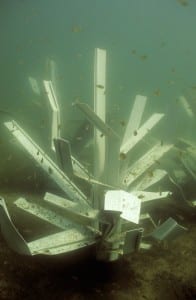
This next group of amazing shots by Engbretson Underwater Photgraphy, show biofilm and algae growth explode after less than four weeks. Fishiding Reclaimed Artificial Fish Habitat products made from reclaimed pvc vinyl siding, act as an ideal inert substrate to grow biofilm which in turn feeds and grows fish at a far above normal or average rates. This process called biomimicry, has been perfected and installed with overwhelming success by a company called Floating Island International, which utilizes recycled plastic matrix to create massive amounts of surface area.
See the dozens of unique artificial fish habitat models, fish attractors and fish cover used at fishiding.com, the leader in proven science based, fish protection.
Fishiding underwater photos by Engbretson Underwater photography
http://underwaterfishphotos.blogspot.com/2012/06/artificial-fish-habitat.html
See the dozens of unique artificial fish habitat models, fish attractors and fish cover used at fishiding.com, the leader in proven science based, fish protection.
Habitat Restoration in Michigan
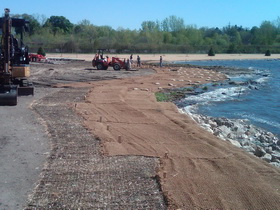
In Muskegon, Michigan we are restoring wetlands and stabilizing shorelines at 10 separate locations. The effort is helping Muskegon Lake, the Muskegon River and Lake Michigan recover from impairments to wetlands and the loss of fish and wildlife. See the dozens of unique artificial fish habitat models, fish attractors and fish cover used at fishiding.com, the leader in proven science based, fish protection.
Money spent on restoration is also helping to stimulate the local economy: the project produced a 6-to-1 return on the investment.
The ecological benefits of this project are clear. Our partners will remove more than 200,000 tons of sawmill waste and demolition material from shallow water and wetlands. They will replace 10,000 feet of hardened shoreline with native vegetation and restore nearly 24 acres of wetland. These changes will help fish and other wildlife return to their native habitat.
The economic benefits are clear as well. We invested $10 million in the project with our partner, the Great Lakes Commission.
A study undertaken by the Commission suggests that the project will generate:
- a $12 million increase in property values,
- $600,000 in new tax revenues annually
- more than $1 million a year in new recreational spending in Muskegon
- 65,000 additional visitors annually
- an additional 55 cents in the local economy for every federal dollar spent
All told, for a $10 million investment, the project will create $66 million in economic benefits. The project will also create jobs in an area with an unemployment rate higher than 12 percent, while creating healthier habitat and more fish.
Posted April 30, 2012
Area golf courses filled with fish
Most of the world’s best golfers this week gather at the TPC Sawgrass Players Stadium Course in Ponte Vedra Beach. They’re there to tackle undulating and tricky greens, tough bunkers, tight fairways, and water hazards full of gators, snakes and sometimes round white balls.
But also on the agenda of some of those elite golfers is fishing in the ponds, lakes, lagoons and famous water hazards in and around the Stadium Course. Those waters are loaded with fish, including largemouth bass the size of newborn babies. The Sawgrass complex of lagoons and other watery spots is chock full of heavyweight bass, many weighing well more than 10 pounds, and fish to 15 pounds have been caught.
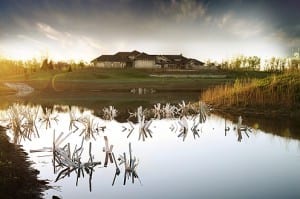
Those are truly world-class fish that many anglers in many places would pay a bundle to hook.
Often before or after a practice round, or a tough day in the rough, players such as Davis Love III, Tiger Woods, Boo Weekley, Greg Norman, Mark O’Meara and many others have been known to hang up a graphite driver in favor of a graphite casting rod at The Players.
The bass fishing is so good in waters at the Stadium Course that years ago it was voted the best for big bass by elite PGA Tour fishermen. See the dozens of unique artificial fish habitat models, fish attractors and fish cover used at fishiding.com, the leader in proven science based, fish protection.
A poll was taken among the golf pros who fish different courses on Tour to learn which of the many places they visit offers the best fishing. The Stadium Course won by a wide margin.
Only players with PGA credentials, very special guests and perhaps course residents are allowed to fish Stadium Course waters, especially during the tournament. But area anglers should take a tip from the golfers that some of the best and most consistent fishing that anglers could ever hope for can be found in the water hazards and nearby ponds and lakes of golf courses.
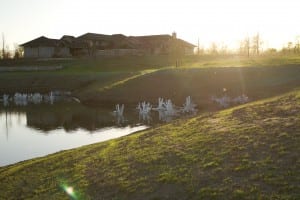
Not only do golf course waters have bass, but many are loaded with bluegills, crappies and catfish. In coastal regions, often saltwater species seep into the freshwaters or tidal waters of golf courses. Plenty of golf courses in Florida, Georgia and the Carolinas are full of fish such as red drum, flounder, baby tarpon, snook, ladyfish, black drum and other species.
While great fishing can be discovered in golf course waters, it’s probably wise not to eat fish caught from them because of the pesticides and fertilizers used on nearby turf. Nevertheless, for fun catch-and-release fishing, few places offer better action than golf course waters.
Getting permission to fish golf ponds can be challenging, particularly on private country clubs — which frequently offer the best action. But it’s worth the effort gaining access. Sometimes meeting and talking with the club pro is worthwhile. Explain you’ll not interfere with golfers on the course, and all fish will be released unharmed. Some golf courses are closed on Mondays, which is a prime time to fish their waters, and permission to fish is more easily obtained then. Dawn, dusk and night fishing is worthwhile because golfers are not on courses, and anglers don’t interfere with play.
In many golf course communities, residents and their guests are allowed to fish, so it pays to make friends with golfers. Golf resorts are popular vacation spots, and guests often have permission to fish water hazards as long as they don’t hamper golf play.
In large golf Meccas, frequently several courses are available, and many feature large, wandering connected ponds and creeks that snake around the area. Many such waters appear small, but instead might cover hundreds of acres, with many places surrounded by overgrown vegetation that’s ideal fish habitat.
Sometimes small, lightweight johnboats, canoes, kayaks and float tubes can be put in, which allows anglers to get far away from golfers and other people — to waters rarely fished. Electric fishing motors often are allowed on boats in golf course communities.
At some golf resorts, angling by visitors is encouraged on water hazards, to the point that improved boat ramps are available, and large bass boats even can be launched and used for fishing. Usually, no big outboards can be used, however, only quiet electric motors.
An important plus for golf course waters is that most are small, shallow, and have limited fishing pressure. Therefore, it takes comparatively little time for anglers to locate fish. More often than not, course ponds and lakes were dug by construction crews for use as fill when building greens, tees and bunkers.
Consequently, water hazards commonly have great structures such as holes, underwater islands, humps, bars, tapering points and drop-offs. Some golf ponds are mini-reservoirs, complete with creek channel edges, flooded timber and stumps, riprap and deep dam water.
In some shallow, natural golf course waters there is no well-defined structure to hold fish. In such waters, the outside edges of grass lines and lily pads might hold almost every fish in the lake or pond. Sometimes, ponds have deep undercut banks that harbor big bass and other species, particularly in sunny weather. Find a cool, shady bank with overhanging willows or other trees and you might have discovered the best fishing spot on an entire water hazard.
Bulkheads around greens and near fairway bunkers, and small footbridges for golf carts over water hazards, also can be outstanding fishing spots. I once stopped on such a bridge on a public Florida golf course and looked down into the shadows, hoping to see bass or bream.
Instead, I spotted a school of about a dozen catfish, none less than 10 pounds.
A little schmoozing of the club pro got permission to fish for the cats, and that afternoon friends and I worked them over using baits on bottom. We caught over a dozen hard-fighting channel cats, including one behemoth pushing nearly 20 pounds.
We released every cat, and have several times since fished the same water hazard — no doubt landing and releasing some of the same catfish over several years.
Not once have we seen another angler working the same spot, though many dozens of golfers cross the bridge daily.By Bob McNally
Restoration work to improve fish habitat on upper Arkansas River
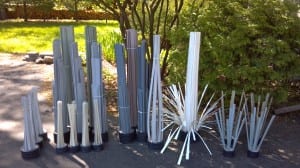
LEADVILLE — Fish habitat enhancement work is set to begin later this year on public parts of the upper Arkansas River below the Highway 24 bridge as biologists and engineers with Colorado Parks and Wildlife prepare to restore a section of river that was once mostly lifeless because of decades of mining activity.
The river restoration work is a key part of the federal and state effort to restore the California Gulch Superfund Site, an 18-square-mile area where historic mining activities occurred. Mines in the area created the discharge of heavy metals and acid into California Gulch at the headwaters of the Arkansas River, making the river in that area unable to sustain healthy fish populations. The river currently supports a trout population because of earlier mine cleanup efforts.
Improvements will be centered on an 11-mile stretch of the river from California Gulch downstream to Twobit Gulch. See the dozens of unique artificial fish habitat models, fish attractors and fish cover used at fishiding.com, the leader in proven science based, fish protection.
DNR Aquatic Habitat Program provides cost share for habitat restoration
See the dozens of unique artificial fish habitat models, fish attractors and fish cover used at fishiding.com, the leader in proven science based, fish protection.
Conservation groups, lake associations and local governments can help improve fish habitat and water quality through a Minnesota Department of Natural Resources (DNR) grants program. Read more…………fish
